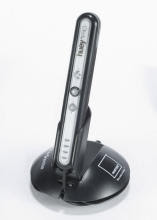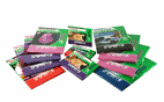Shoot in RAW mode
Shoot in Raw mode to preserve the maximum amount of image data. Raw files offer a far greater range of tones than JPEGs do, and they don’t suffer the further loss of data from the in-camera processing (sharpening, contrast/colour adjustment etc) that JPEGs go through.Add noise
To give your b&w image the look of classic b&w film try adding noise (filter> noise>add noise). You don’t need much, but in moderation it can be very effective. Make sure you check the box marked ‘monochrome’ or you’ll get multi-coloured noise!Don’t desaturate
The obvious ways to convert your colour pictures to mono are to convert the image to greyscale (read about Black and White Mono mode for Landscapes photography), or to go to the hue and saturation box and desaturate the image, but these methods do not produce high quality, controllable results. Follow Philip Andrews’s tutorials on pages 14-17 for better methods.Better Mono prints
Not all inkjet printers are equal when it comes to getting good b&w prints. Colour inkjet printers have to combine their colour inks to produce the grey tones, which can often lead to subtle hints of colours coming through. Some printers have methods to deal with this problem. Epson, for example, has a technology called the Advanced Black and White mode – ABW – which uses its black and grey inks before it starts using the coloured inks, to give a better greyscale. Some HP
have to combine their colour inks to produce the grey tones, which can often lead to subtle hints of colours coming through. Some printers have methods to deal with this problem. Epson, for example, has a technology called the Advanced Black and White mode – ABW – which uses its black and grey inks before it starts using the coloured inks, to give a better greyscale. Some HPprinters, meanwhile, enable the user to replace the
entire colour cartridge with one that contains shades of black ink, for great quality mono prints.
Shoot in coulour – convert later
Unless you want to get b&w prints straight from the media card, it’s best to shoot in colour and do your mono conversions using software such as Photoshop Elements afterwards. This gives you much more control over the final result. If you do want to produce in-camera b&w, some cameras enable you to make a mono duplicate of your colour file. In Nikon DSLRs this feature is accessed via the camera’s retouch menu. This is in addition to the greyscale mode where you actually shoot in Black and White.Go Sepia
Mono pictures don’t have to be just grey. Try adding a coloured tint such as the
ever-popular sepia, for a warm, nostalgic feel. The quickest way to do this is to
select Colour Balance and add +30 red and -20 yellow. This is a start point. Adjust the colour sliders until you get the effect you want.
Use DXo Film pack
If you really want to get the look of film – and perhaps not just any film but a specific film – DxO filmpack is a great way to do this. It’s a software plug-in that enables you to replicate many common film types in quite convincing style. Go, on, give your shots that Tri-X or HP5 look – you know you want to. Visit www.dxo.com for more details.
Profiles & calibration
For the most accurate b&w prints from normal inkjet printers it’s best to profile your printer to ensure that the colour accuracy is as good as it can be. Printer profiling is a dark art which can be expensive, but there are some cheaper solutions. Some specialist papers come with their own profiles. You’ll also need to calibrate your monitor and there are a few ways you can do this. The first is through Adobe gamma, which is free as part of Photoshop, but a more accurate method is to buy a monitor calibrator. These attach to the monitor and read a series of light emissions from the display. Models such as the Colorvision Spyder 2 Express, Pantone Huey and Gretag Macbeth can be bought for between £50 and £70.
ensure that the colour accuracy is as good as it can be. Printer profiling is a dark art which can be expensive, but there are some cheaper solutions. Some specialist papers come with their own profiles. You’ll also need to calibrate your monitor and there are a few ways you can do this. The first is through Adobe gamma, which is free as part of Photoshop, but a more accurate method is to buy a monitor calibrator. These attach to the monitor and read a series of light emissions from the display. Models such as the Colorvision Spyder 2 Express, Pantone Huey and Gretag Macbeth can be bought for between £50 and £70.Use the best mono printer
If you’re really serious about high-quality b&w prints you’ll need to invest in a high-end printer using pigment-based inks. These produce deep rich blacks and are ideal for use with textured fine art papers. Most of these printers can print sizes up to A3. Though they cost a bit more than dye-based consumer printers, for exhibition-quality work they’re worth the investment.Experiment with paper

The range of papers that you can use for digital black and white printing now rivals or exceeds those that existed for the darkroom process. Many of the papers add texture to create an artistic, individual feel. Others contain lower acidity and so are more archival for the longevity of your prints. Experiment to find one you like. Some manufacturers produce sampler packs that include a range of their products for you to try.
read also Amazing landscape photography from Ian Moran

















